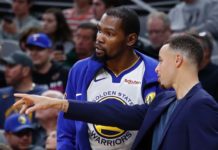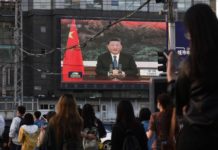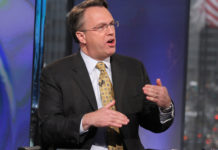TOKYO — It was 2011, and Carlos Ghosn was preparing his automotive empire for its most ambitious phase yet. Under his plan, within five years, one of every 12 cars sold around the world would be made by Nissan of Japan. To achieve that goal and cut costs relentlessly, he said, Nissan would have to work closely with Renault, the French automaker he also controlled.
Some people at Nissan suspected another motive. Engineers at Nissan and Renault began receiving less money to develop separate models. In effect, they were being forced to work together. Nissan insiders worried that Mr. Ghosn was quietly trying to fuse the Japanese company to the French one.
But few dared to object or raise doubts about a possible merger. Mr. Ghosn was, as a critical governance report revealed this week, “deified within Nissan,” a leader whose decisions and activities were “deemed impenetrable territory within the company.” He was known to drive out managers who disagreed with him. He shared authority — and his plans — with only a few loyal executives.
Today, Mr. Ghosn faces charges of financial wrongdoing after being forced out of the company, and the tensions inside Nissan and across the alliance have blown wide open.
The full story of what precipitated Mr. Ghosn’s ouster could emerge in coming months as he and a top aide, Greg Kelly, stand trial in Japan. But it is becoming increasingly clear that his fall occurred within a deeply divided and factionalized group of corporate executives. His purge from Nissan and its partners has torn the veneer of unity off what had been a model alliance.
The question now — for Nissan, Renault, the governments of Japan and France and more than 450,000 employees of one of the world’s biggest automotive empires — is whether the rifts are too deep to repair. The alliance, which grew to include Mitsubishi Motors in 2016, had been a case study of innovation in the era of globalization, a seamless melding of different cultures through the sharing of technical knowledge.
“I sensed that in the hallways there were people who were becoming apprehensive,” said Johan De Nysschen, a former Nissan senior vice president and chief of the company’s luxury Infiniti division. “There was anxiety at the top levels of management about this trend.”
Some of the division was fostered by Mr. Ghosn himself, former Nissan executives have said in interviews. The result was a toothless board, internal watchdogs with no authority to investigate top executives and, according to Nissan’s new leaders and former employees, an imperious corporate leader.
The environment was ripe for back-stabbing — and now Mr. Ghosn has said that is exactly what happened to him. In an interview with the Nikkei news service while he was being held in a Tokyo jail, he cited “plot and treason” by Nissan executives worried that he was planning to forge closer ties between the company and Renault.
“People translated strong leadership to dictator, to distort reality,” he said, for the “purpose of getting rid of me.”
Mr. Ghosn built this border-spanning enterprise. Someone else will have to save it.
“Trying to untangle it would be a nightmare,” said Carla Bailo, a former Nissan executive who spent 25 years at the company and now leads the Center for Automotive Research, a Michigan think tank. “But without a strong person leading both companies, certain elements may start to fall apart.”
A Mismatched ‘Couple’
When Carlos Ghosn came to Nissan in 1999, he found a company in dire need of reform but sometimes resistant to change. He slashed jobs and closed factories, making Nissan a much-admired industry turnaround story.
He also provoked concerns, inside and outside the carmaker, that he was turning the Japanese company into a French one.
Renault had bought a 36 percent stake in Nissan in 1999, and Mr. Ghosn realized early that he could cut costs at both companies by sharing suppliers and design expertise. That prompted grumbling among Japanese government officials and the public that he was trying to turn a pillar of the country’s industrial prowess into a vassal of France.
Mr. Ghosn emphasized that Nissan and Renault were respected partners and that the arrangement was not, as it was sometimes criticized in Japan, akin to a corporate child-parent relationship.
“As with a couple, there must be a clear definition of the rules and a good deal of attention paid to the other partner,” he wrote in a 2007 book about Nissan’s reinvention. “The alliance is making progress because it respects individual and cultural identities.”
But the auto industry was shifting. The American and Chinese markets were growing more competitive. Sales in Europe had shifted into slow gear. More recently, automakers have had to invest in new technologies like electric vehicles and self-driving cars in part because global tech companies are rapidly boring into the market. Mr. Ghosn reasoned a more streamlined alliance was the only way to continue to dominate world car sales.
Starting around 2011, when Mr. Ghosn outlined bold expansion plans for the Nissan-Renault alliance, he had begun to bring the two companies closer together, former executives said.
His budgets — with spending cuts of 5 percent a year — forced integration in design and engineering. Mr. Ghosn also began naming executives whose responsibilities spanned the alliance.
The distinctions between Nissan and Renault began to blur, wrongly so to its top Japanese managers.
“The powertrain,” said Tetsuji Isozaki, a former union leader who worked on Nissan’s engine development team and is now a member of the Japanese Parliament, describing how the blurring began. “Then the transmission. Then it was the next thing and then the next thing, until it got to a place where the car’s identity was at stake. Some people started asking: ‘Isn’t that going much too far?’”
In 2015, when the French government bolstered its influence over Renault by increasing its stake in the company to nearly 20 percent from 15 percent, Nissan balked. The Japanese company relented only after Renault agreed to a joint statement in which it promised not to interfere in Nissan’s affairs.
“A sense of urgency started growing from around that time,” Mr. Isozaki said.
Still, Mr. Ghosn faced little internal opposition, the former employees said. In part, they said, that was by design.
“He made sure every part of the organization depended on him to function,” said Takeshi Yamagiwa, a business consultant in Tokyo who spent three decades at Nissan, where he led vehicle development. “It got to a point where only a clone of Mr. Ghosn would be able to succeed him.”
‘They Were Not Friendly’
Behind the scenes, Mr. Ghosn fostered rivalries among executives and sidelined those who opposed him, said the former employees.
At the height of the global financial crisis, in early 2009, he moved to cancel the annual spring hiring of new college graduates, a sacrosanct rite of passage in Japan. Nissan’s chief of personnel, Hitoshi Kawaguchi, argued the austerity measure would ruin the lives of hundreds of young people, according to a person with knowledge of the incident.
Months later, the Nissan chief moved Mr. Kawaguchi from his job managing the company’s 160,000-employee work force to one overseeing intellectual property and external affairs. In his place, Mr. Ghosn promoted Mr. Kelly, who became a trusted lieutenant. Some Nissan executives believed Mr. Kawaguchi was being punished.
In a report released on Wednesday, a panel convened by Nissan to examine its corporate governance said Mr. Ghosn brooked little dissent from directors or auditors. Those who disagreed with him were summoned later to meet with him, it said. He “set the performance targets substantially by himself” and “succeeded in making certain administrative departments opaque,” the report said.
He disliked having questions or opinions raised in board meetings — and such meetings on average lasted 20 minutes. “Eventually,” the report said, “meetings of the board of directors were not an environment for robust debate.”
In a statement, a spokesman for Mr. Ghosn called the report “part of an unsubstantiated smear campaign against Carlos Ghosn to prevent the integration of the alliance and conceal Nissan’s deteriorating performance.”
Mr. Ghosn largely handpicked the members of Nissan’s board, with shareholder approval. The board, which included eight men and one woman in the past couple of years, was rife with professional tensions. Among them were two Nissan lifers, Hiroto Saikawa and Toshiyuki Shiga, who competed for Mr. Ghosn’s favor after they both joined the board in 2005.
An intensely private graduate of the prestigious Tokyo University, Mr. Saikawa earned a stellar reputation as a leader of Nissan’s powerful purchasing department. In the mid-1990s, he had been a top aide to Nissan’s former president Yoshifumi Tsuji before going to Europe to help shore up the automaker’s overseas operations.
As Nissan’s turnaround went into high gear in the 2000s, Mr. Ghosn reached outside the hierarchy to make Mr. Shiga his No. 2. Unlike the more polished Mr. Saikawa, Mr. Shiga had spent his formative years at a second-tier prefectural college in the port city of Osaka before cutting his professional teeth at Nissan’s now-defunct pleasure boat business.
The gregarious Mr. Shiga had a reputation for being a skilled salesman. He was regarded as a counterweight for promotion to Mr. Saikawa, former executives said. Both were born in 1953 — a year before Mr. Ghosn — and seen as direct competitors for the top job.
“They came up as complete opposites of each other, and they were not friendly,” said Takeshi Isayama, a former top trade official with the Japanese government and vice chairman at Nissan.
In 2013, Mr. Ghosn effectively demoted Mr. Shiga after disappointing results and replaced him with Mr. Saikawa. The tensions between Mr. Shiga and Mr. Saikawa were a factor in how the board debated issues and interacted with Mr. Ghosn, according to people familiar with Nissan’s management decisions.
Other members of the board in 2018 included Hideyuki Sakamoto, a longtime Nissan executive, and Masakazu Toyoda, a former government trade official. The sole woman, Keiko Ihara, had an economics degree but was better known as a racecar driver. The non-Japanese board members were Mr. Ghosn, Mr. Kelly and two former Renault executives. One of the Renault executives was considered an outside director.
Former Nissan executives say the board deserved some blame for a corporate culture that could not hold Mr. Ghosn in check.
Mr. Saikawa and Mr. Shiga had “a certain responsibility in all of this,” Mr. Isayama, the former Nissan vice chairman, said in an interview. “First, in letting Mr. Ghosn amass so much power, and then not being able to correct it.”
Checks and Imbalances
When Mr. Ghosn was arrested, according to Nissan, the board found out at roughly the same time as everybody else.
Early last year, according to Nissan, whistle-blowers found evidence of wrongdoing by Mr. Ghosn and took their findings to former prosecutors for advice. The former prosecutors took the findings to current prosecutors in Tokyo, who asked for silence while they built a case. Mr. Saikawa has said he learned of the investigation in October, well after it had begun.
Corporate governance experts said that series of events described by Nissan differed sharply from what was typical for corporations in Japan. One of the people involved in Nissan’s internal inquiry was an executive in a position that required him to inform the board of what he found, according to two people with knowledge of the events.
That executive was Hidetoshi Imazu, Nissan’s statutory auditor. In Japan, the statutory auditor is appointed by a company’s shareholders to oversee the board. The responsibilities are different from those of an outside auditor or the board’s audit committee. Mr. Imazu, who was appointed to the position in 2014, is another longtime Nissan executive. He is revered at the company for pioneering its entrance into the United States in the 1980s.
Mr. Imazu, working with whistle-blowers whose names have not been disclosed publicly, helped to prepare an internal report that went first to former prosecutors, according to the two people familiar with the events in question. Mr. Imazu’s role has been widely reported in the Japanese media.
“I have never heard of an instance where the statutory auditor would alert law enforcement even before the board,” said Masahito Nagata, executive director at a nationwide organization of statutory auditors in Japan. “It is the fundamental duty of the auditor to report to the board.” Nissan declined to make Mr. Imazu available for questions.
It was not the only time Nissan’s internal system of checks and balances departed from the norm.
Mr. Ghosn installed an internal auditing team in the early 2000s that was meant to raise red flags over possible misconduct or misspending by employees. The auditors, however, had little authority to investigate the top echelons of management, according to the former employee. Mr. Ghosn’s financial dealings would have been beyond the purview of the group, which comprised about 15 employees at Nissan’s Yokohama headquarters, the former employee said.
The governance report released on Wednesday said Mr. Ghosn would not reappoint auditors that the panel members described as “fastidious.”
Further limiting scrutiny at the company, Nissan’s financial affairs were overseen by a number of people with cozy relationships with management. Two of Nissan’s outside statutory auditors — non-employees assigned to monitor the dealings of the company’s directors — were former executives from financial institutions that had active relationships with Nissan.
Nissan’s external auditors, Ernst & Young ShinNihon, also had unusually tight ties with the company. One accountant who has long handled Nissan’s books is now a statutory auditor at a Nissan foundation.
Ernst & Young declined to comment on its arrangement or its relationship with Mr. Ghosn.
Despite those weaknesses, it isn’t clear that Mr. Ghosn used them to reap personal gains improperly. In its governance report, the panel looking into Nissan’s problems acknowledged that Mr. Saikawa, the current chief executive and now Mr. Ghosn’s most prominent critic, had signed off on at least some of the compensation agreements at the center of his predecessor’s ouster.
A Fractured Alliance
Nissan and Renault are now looking for ways to hold their alliance together. With Mr. Ghosn out, and the alliance’s tensions laid bare, the prospects are uncertain.
In March, new leaders at Renault, Nissan and Mitsubishi met in Tokyo to announce a revamped management structure for the alliance. It calls for Renault to get two seats on a new, four-person operating board; Nissan and Mitsubishi would each get one board seat. Essentially, the French and Japanese sides will have equal say.
Renault has announced a review of a sponsorship deal with the French palace of Versailles to determine whether Mr. Ghosn used the venue inappropriately for a personal party — a splashy wedding reception — in 2017.
But Renault and the French government have mostly focused on discussing the next phase of the alliance. Renault has publicly questioned how Nissan has handled the investigation, but it needs the Japanese company’s low-cost knowledge to cope with the mature European market.
Nissan, which has factories in the United States and elsewhere around the world, must find a way to navigate a tougher global market for cars while managing fraught relations with its French partner. Still, it has taken part in a steady public relations effort to portray Mr. Ghosn in a harsh light.
On Mr. Ghosn’s 100th day in jail, Mr. Saikawa said in an interview with Nikkei Asia Review that he regretted that Nissan had not paid “closer attention to corporate governance.” The person most at fault, he said, was Mr. Ghosn.
Mr. Saikawa said Nissan had “total dependence” on Mr. Ghosn before his arrest. “It is not that the board was not aware, but that we were unable to know,” Mr. Saikawa said.
Eight days later, Mr. Ghosn was out of jail, released on bail through the efforts of a new legal team. He gave no interviews but indicated the energy he once spent on the alliance would be directed at Nissan.
“I am innocent,” his said in a statement, “and totally committed to vigorously defending myself in a fair trial against these meritless and unsubstantiated accusations.”
Source : Nytimes













